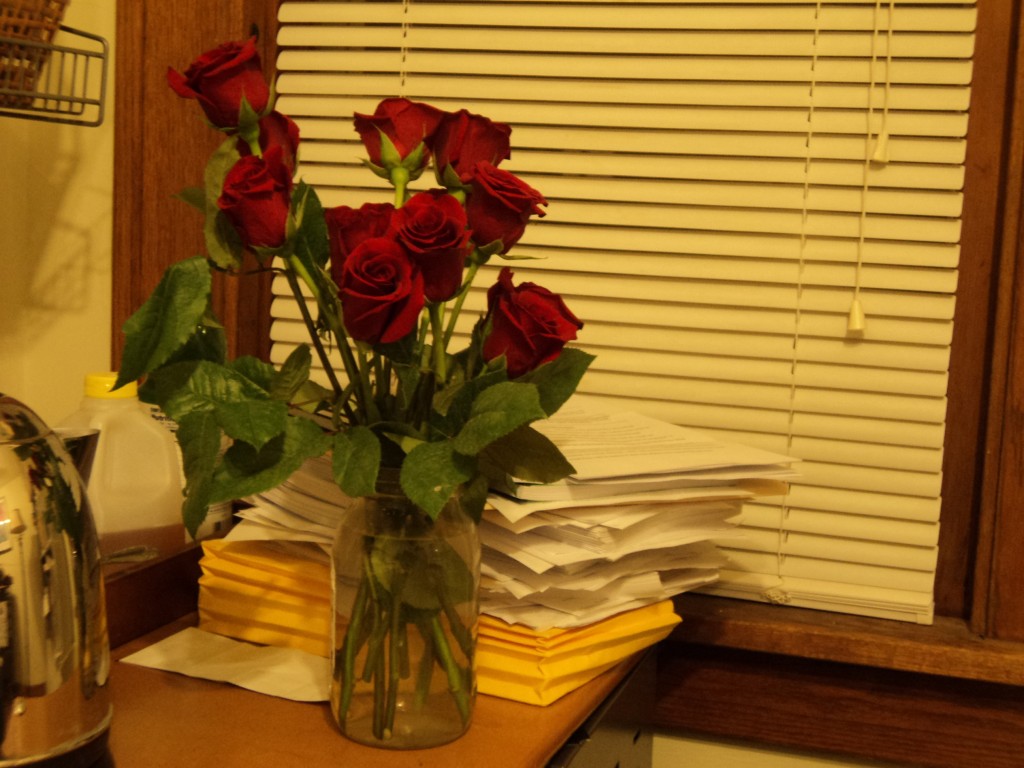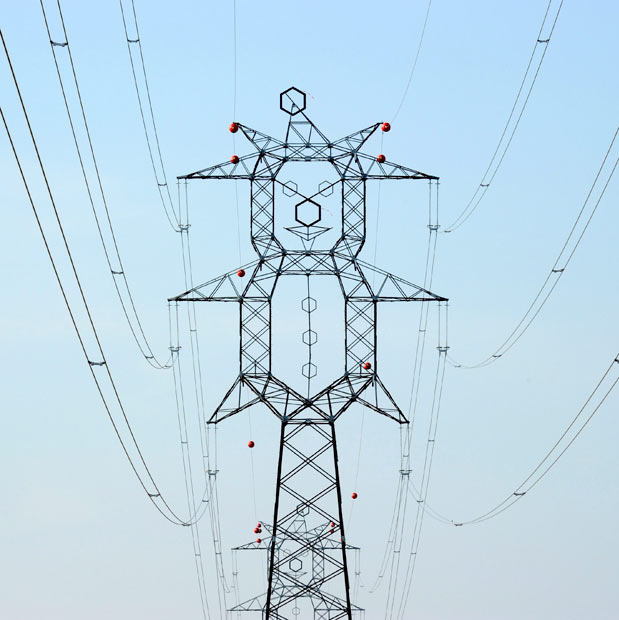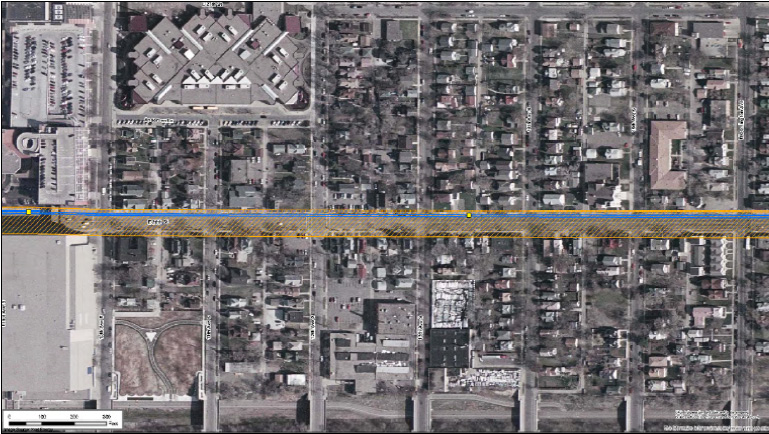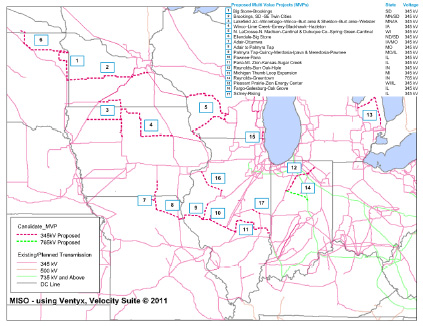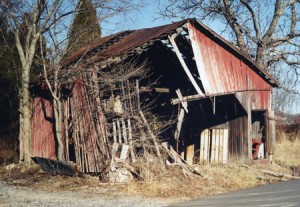It’s that time of year again…
February 13th, 2012
Send in the clowns
February 4th, 2012
Seems that they’re making an effort in Hungary to design industrial edifices more user-friendly… from the Telegraph. Couldn’t they just use a big eagle nest as a hat?
Undergrounding Hiawatha!
January 13th, 2012
There’s good news and bad news. The good news is that the PUC did order that the Hiawatha Project transmission line be undergrounded.
YEAAAAAAAAAAAAAA!
The bad news is that NO ONE is addressing need, need has been presumed, despite lots of evidence in the record that the project is way way more than what is required for the claimed 55MW need, which in itself is questionable. Silence… Those who worked so hard to get a requirement for a Certificate of Need abdicated, zero follow through, after legislation passed to require a Certificate of Need, and it then wound its way through the PUC process, and there were NO intervenors.
Here’s the PUC’s deliberation:
It seems to end before they’re done, and there’s a note that complete audio will be posted later, so check back. Right now there’s about 45 minutes and it ends as they’re going through exceptions to the ALJ report, a prelude to the ultimate vote.
Here’s the report in theSTrib:
Xcel told to bury new power lines across south Minneapolis
Article by: STEVE BRANDT , Star Tribune
Updated: January 12, 2012 – 11:15 PM++++++++
A state board Thursday ordered that new high-voltage power lines across the heart of south Minneapolis be buried underground but deferred the question of who should pay the extra $13.6 million cost.
The Minnesota Public Utilities Commission ordered that the twin 115-kilovolt lines requested by Xcel Energy be deemed necessary but said they should be buried under E. 28th Street.
That’s a victory for the city and a number of neighborhood representatives. They argued that an alternative route that would run lines overhead or underground along the bike-pedestrian corridor was too disruptive. “It’s a huge victory, said Soren Jensen, staff chief for the Midtown Greenway Coalition.
But the precedent-setting question of who pays will require a separate proceeding that will last several months and determine whether all Xcel customers in Minnesota will help bear the cost of burying the lines or just those in Minneapolis.
The city argued that all Xcel customers should pay because the factors arguing for burying the route are so compelling that any other route, including the greenway, would be unreasonable. Burial of the lines, the city said, should thus be considered a standard cost, borne by all customers, rather than a special accommodation whose extra costs should accrue only to Minneapolis residents. Xcel agreed with that wider-cost impact.
But the PUC wasn’t ready to make that precedent-setting decision now, telling Xcel to file its views in 30 days in a proceeding that will give other potentially affected parties a chance to comment.
“There is no precedent case just like this,” said attorney James Strommen, who argued on behalf of suburban cities in support of the city position. “The standard is not always overhead in all cases, in our view.”
At the PUC’s request, Xcel generated estimates of the amounts needed to pay off the extra cost of the buried lines. To do so in the standard five years, the per customer cost would be $12 if spread statewide, and $83.40 if levied only within Minneapolis.
Xcel estimates that the lines and two new substations at either end, at Hiawatha and Oakland Avenues, will cost $42 million. The utility will refine those costs as it does final engineering for the project; it plans to break ground later this year and start operations in 2014.
Xcel argued that since 2006, electrical demand has exceeded its capacity to reliably provide service to customers in the south Minneapolis area. Opponents argued that Xcel has further plans to bisect south Minneapolis with transmission lines, has overestimated demand and should substitute conservation measures.
The utility originally proposed that the lines be built within the Midtown corridor paralleling Lake Street somewhere between E. 31st Street and E. 26th Street. It said that a greenway route would be cheapest but that option quickly drew opposition from the recreation lobby.
And MISO “approval” means exactly what?
December 9th, 2011
Here it is, MTEP 11, the Midwest Transmission Expansion Plan for 2011 (CLICK HERE, look on lower right), and it’s in the news too. The main report and some appendices:
MTEP 11 Appendix A-1_2_3 – Cost Allocation
Page listing all the Appendices
MTEP Appendix e52 Detailed Proposed MVP Portfolio Business Case
Please take note that this includes not only the CapX 2020 Brookings-Hampton line (#2 on map), but also the LaCrosse-Madison line (#5 on map), the one they need to build or they’ve got a lot of system instability goin’ on.
From my perspective, the most important thing to be aware of is that MTEP 11, and the MTEPs that preceded it, are about the shift to economic dispatch and development of the electric market. At the outset, MISO studied potential benefits of this shift, and found massive economic benefits, of which they speak in their press release. The economic benefits are realized by optimizing use of lower production cost generation, and in their own words, to “displace natural gas with coal.” Don’t believe it? Read this study that ICF did for MISO:
This is the worst possible result for those of us who breathe, and means that tens of thousands of landowners will have very high voltage transmission lines on their land, taken from them by eminent domain. These projects, almost all of the MTEP projects, are not about electric reliability, they’re “need” is to deliver market transactions of electric generation from any “point A” to any “point B,” and this is a private interest, a desire for market profits, and not a public interest.
Another issue looming is “what does MISO ‘approval’ mean?” Transmission lines are regulated by states, individually, and there is a movement to strip states of their regulatory authority and transfer that to federal entities. Look no further than Obama’s transmission “fast track” proposal, naming one of the CapX 2020 projects! States must make their energy regulatory decisions in an open, transparent process and based their decisions on ratepayer and public interest. That focus is not present in federal top-down edicts. States’ rights are at issue and we need to keep on our toes so this power shift doesn’t slide through.
And it’s not “just” the ICF report above, that’s it’s all about coal is clear from prior press. Here’s an important sentence, quoting GRE’s spin-guy Randy Fordice — explaining what we all know, that the MISO effort to get the “benefits” of displacing natural gas with coal:
Coal with benefits, yesiree… Gotta hand it to Fordice for being honest!
National Park Service: “No Action Alternative” for Susquehanna-Roseland transmission
November 21st, 2011
Yes, it’s true, the cow is out of the barn – and the National Park Service says that the “No Action Alternative” is the best alternative for the Susquehanna-Roseland transmission line. Can you hear PSEG and PPL squealing???
Big thanks to Scott Olson for the heads up, and this link:
The bottom line, from page 16 of the pdf below, page vii of the actual document:
ENVIRONMENTALLY PREFERRED ALTERNATIVE
The environmentally preferred alternative is the alternative that would promote the requirements of the
national environmental policy expressed in section 101(b) of NEPA. It is the alternative that causes the
least damage to the biological and physical environment and that best protects, preserves, and enhances historic, cultural, and natural resources (CEQ 1981, Q6a). Alternative 1, the no-action alternative, was selected as the environmentally preferred alternative by the NPS. This decision was based on the available scientific data about the proposal and mitigation measures presented by the applicant and collected by NPS. An analysis of this data made it clear that alternative 1 best meets the requirements of the environmentally preferred alternative.
Really, that’s what it says… wow… I’ve never seen that before in a DEIS. You can see for yourself here, again, p. 16 of the pdf, page vii of the actual document:
SRLine DEIS Volume 1, Front Matter, Chapters 1 and 2 (8.2 MB, PDF file)
Here’s the NPS page with the whole thing:
Comments are due by 11:59 p.m. January 31, 2012:
National Park Service Susquehanna to Roseland 500 kV Transmission Line Right of Way and Special Use Permit Draft Environmental Impact StatementFrom the site, there are three public “meetings” scheduled where you can make comments in person:
Tuesday, January 24, 2012
(snow date 1/31)
Fernwood Hotel and Resort
U.S. 209 Bushkill, PA 18324Wednesday, January 25, 2012
(snow date 2/1)
Stroudsmoor Country Inn – Ridgecrest
RD#4 Stroudsmoor Road Stroudsburg, PA 18360Thursday, January 26, 2012
(snow date 2/2)
Farmstead Golf and Country Club
88 Lawrence Road
Lafayette, NJ 07848
Comments are due by 11:59 p.m. January 31, 2012. If you are unable to attend the public meetings, please submit your comments by January 31, 2012 via the internet at http:// parkplanning.nps.gov/DEWA or by mail to address below (there are two addresses below – best send to BOTH!):
John J. Donahue, Superintendent
Delaware Water Gap National Recreation Area &
Middle Delaware National Scenic and Recreational River
HQ River Road, off Rt. 209 Bushkill, PA 18324and
Pamela Underhill, Superintendent
Appalachian National Scenic Trail
P.O. Box 50 Harpers Ferry, WV 25425
Or by filing it at this site:
